Frieze celebrates 20 years of putting art lovers in the picture
Frieze London director Eva Langret looks back on 20 years of the pioneering art fair
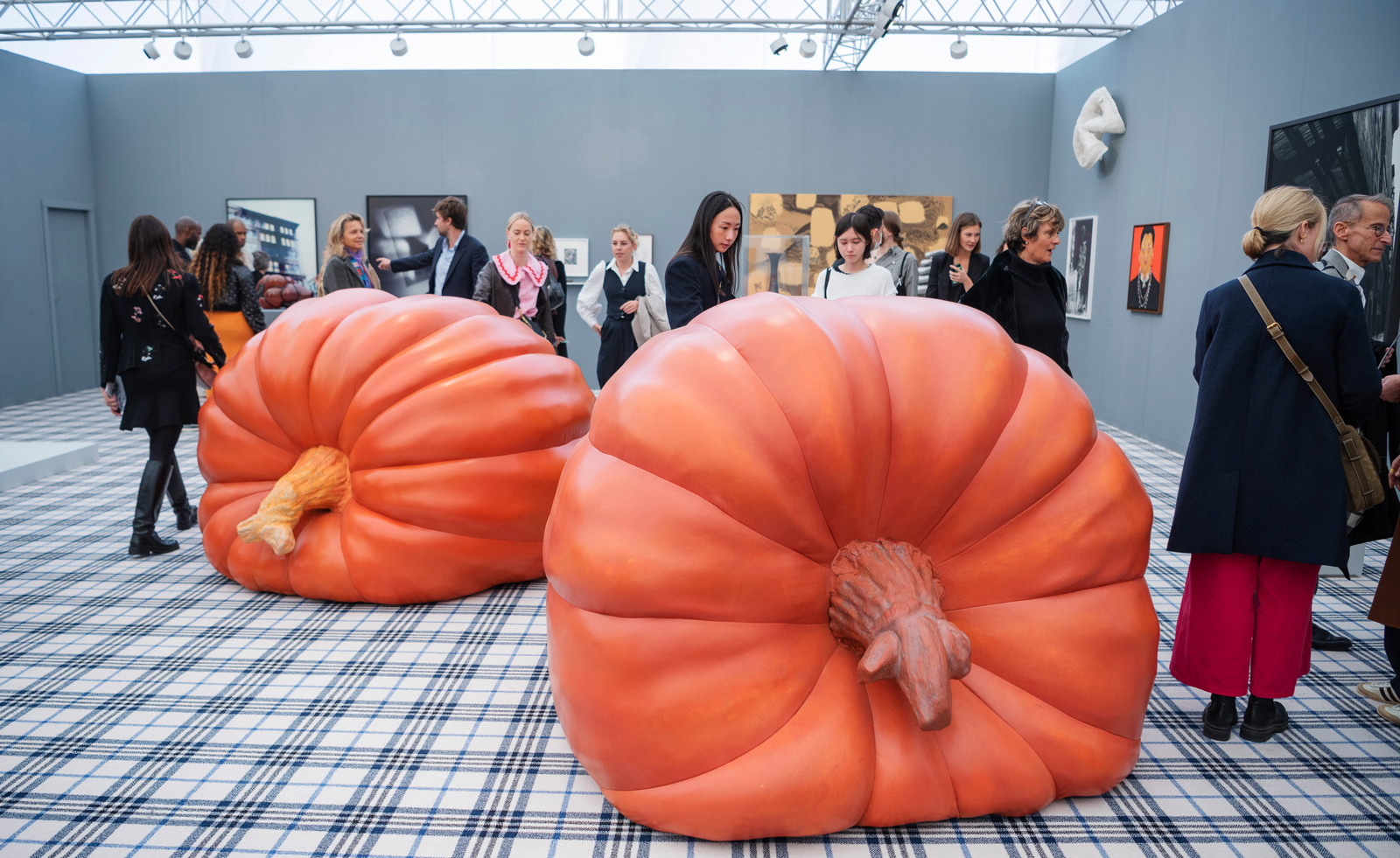
With Frieze London 2023 hitting town this week (11 – 15 October), we look back on 20 years of Frieze.
When Frieze magazine held its first art fair back in 2003, it solidified what had been happening on London’s contemporary art scene for the last decade. The city was buzzing, attracting people from around the world, but until Frieze, there had been no single location to bring them all together.
After the arrival of the YBAs in the late 1980s, galleries like White Cube, Sadie Coles HQ and Victoria Miro were on the ascendency, but a central meeting point was needed that could match the verve of what was happening in the galleries. ‘Right from the outset, it was about blurring boundaries and thinking about Frieze as not just a trade fair,’ says Frieze London’s director Eva Langret. ‘It’s also a commissioning outfit with the artists’ projects, it’s an educational platform with the talks programme, and it’s a meeting place for the wider arts community.’
Since its inception, the fair has been innovating the experience through citywide collaborations and free public initiatives like Frieze Sculpture. And 20 years down the line, galleries still bring new ideas to Frieze before trying them elsewhere. Whether it’s a colossal sale price, or the meticulous recreation of an iconic artist’s studio, the fair has been grabbing column inches for two decades.
Eva Langret on 20 years of Frieze
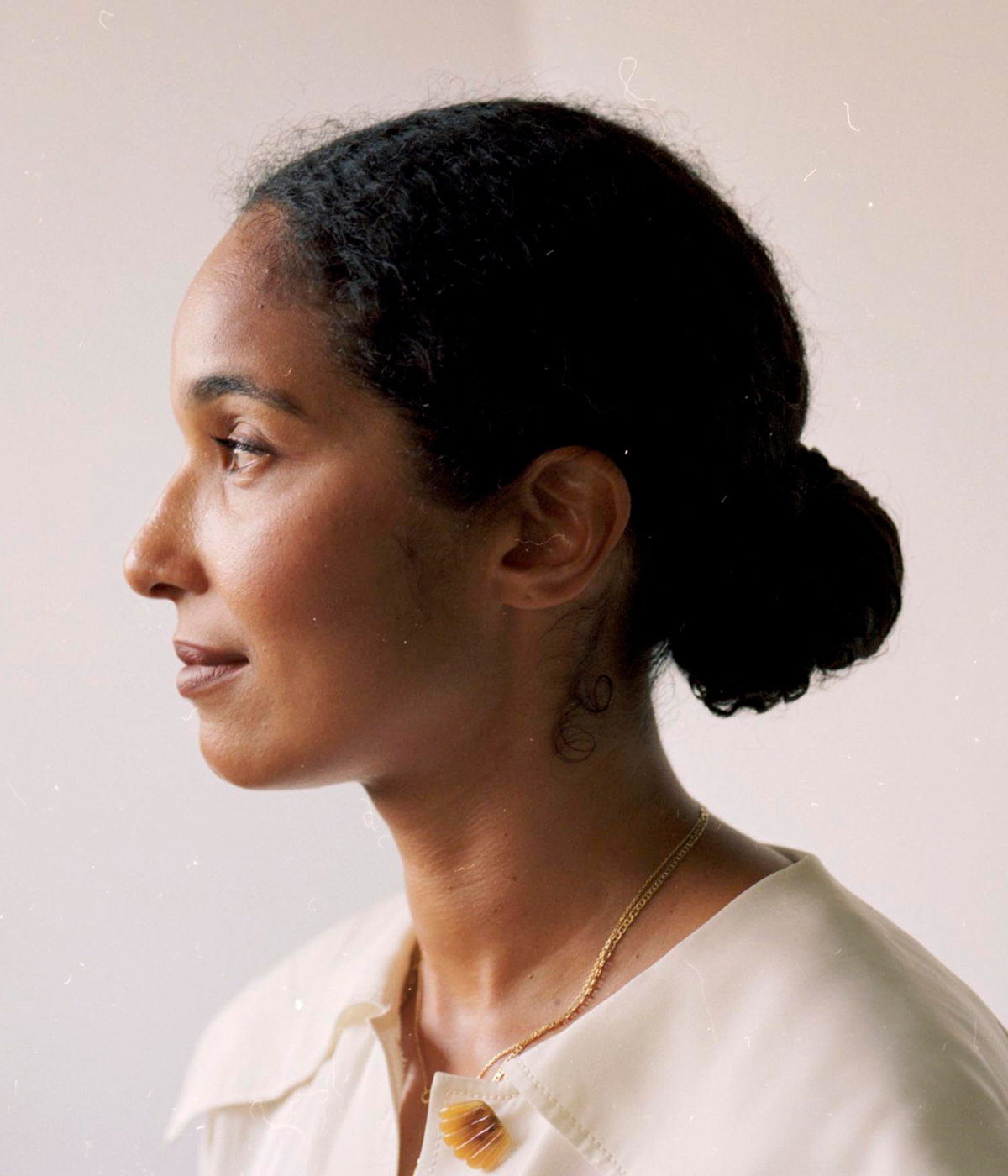
Frieze London’s director Eva Langret photographed at Frieze HQ in Temple, London, in September 2023
In 2003, reading about the first edition from her parents’ garden in France, Langret remembers wanting to attend. Having spent time as an Erasmus student in London, she had already tapped into the city’s creative buzz. Two years later, she would be there.
‘The first Frieze I went to was in 2005. That’s the first year I came to London, and I remember that it was my boss from Brixton gallery 198 Contemporary Art & Learning who kindly paid for my ticket. I got dressed up to the nines and was completely overwhelmed by the sheer quantity of everything that there was to see and how global it was already.’

Lisson Gallery’s booth at Frieze Art Fair 2007, including work by Rodney Graham and Julian Opie
Like so many people who now work in the industry, she saw something that she wanted to, and could, participate in. The fair’s founders, Amanda Sharp and Matthew Slotover, had filled a much-needed gap that pushed the art market forward. Frieze brought creativity and commerce closer together, blurring the lines between art and its buyers. This later evolved into also offering live music and talks, as well as events that spilled out into other parts of the city.
Receive our daily digest of inspiration, escapism and design stories from around the world direct to your inbox.
‘I think that’s what put Frieze on that trajectory and set us apart,’ says Langret. ‘It was the vision of Matthew and Amanda, and it’s one that we’re all still carrying through 20 years later, in what is now a wildly different artistic landscape with so many art fairs.’
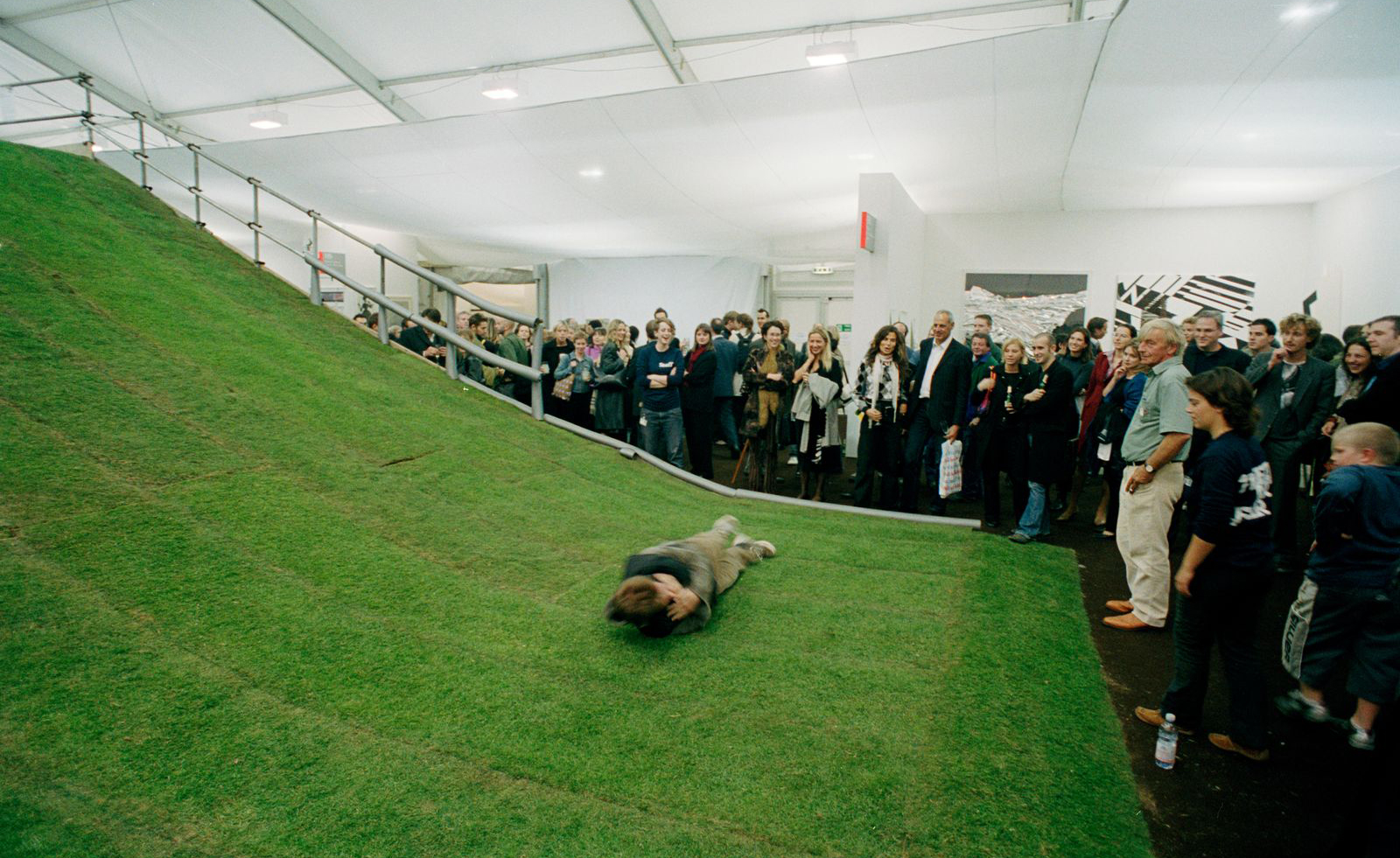
Untitled (slope), by Paola Pivi, at Frieze Art Fair 2003
Frieze fair veteran Alison Jacques is opening a new 6,000 sq ft space on Cork Street to accompany the gallery’s existing Fitzrovia gallery this autumn, launching it during Frieze Week. ‘In 2003, Frieze felt like one of the most exciting things to happen to London since the opening of Tate Modern three years earlier,’ says Jacques. ‘There was a buzz that reminded me of the energy of the YBA years and the opening of “Sensation” at the Royal Academy in 1997. Everyone in the international art world came into town for the week. The biggest names in the collecting world and major museum curators flew in to look and buy. It was an exciting time for galleries, and it changed the local market in London, cultivating many new collectors.’

Les Bikes de Bois Rond, by Gavin Turk, at Frieze Art Fair 2010
In 2021, Frieze added a permanent exhibition space to its portfolio, opening up No. 9 Cork Street. The gallery, headed up by Selvi May Akyildiz, will this year host shows by Australia’s Sullivan & Strumpf, New York's Charles Moffett, and LA's Night Gallery. 'In addition to our exhibition programme, this summer, No. 9 organised the first Cork Street Carnival, a celebration of Afro-Cuban music with dance workshops and street food vendors,’ said Akyildiz. ‘I can’t wait for everyone to visit these incredible shows and help us celebrate 20 years of Frieze London.’

Pages of Light, by Yoko Ono, at Frieze Art Fair 2008
The UK capital provided the blueprint, but more incarnations soon followed: Frieze Masters, which shows work made before the year 2000, and Frieze New York both launched in 2012, while Frieze hit LA in 2019 and Seoul in 2022. When looking to expand, the Frieze team looks for a certain ecosystem. Says Langret, ‘We choose the cities we work with because they have a thriving artistic community, as well as their own restaurant and fashion scenes. Then the mission is to work out how the fair can sort of be a pinnacle moment in the city’s cultural calendar.’

10 Inflammatory Essays, by Jenny Holzer, at Frieze Art Fair 2017
Frieze has also taken its financial successes and stepped in to help cultural institutions in the UK, taking the fair out of the tent and into the year-round fabric of the city. Acquisition initiatives with Tate and Camden Art Centre have long been a great help to both institutions when acquiring work at the fair. And now, in a new venture, Artist-to-Artist the fair has invited a group of leading artists, including Olafur Eliasson, Tracey Emin and Wolfgang Tillmans, to nominate an artist for a solo exhibition at Frieze London, tapping into the creative community and pushing for Langret’s passion, a more diverse art landscape.
‘I think to continue to be supportive of the wider ecosystem is something that’s quite unique to us, and we’re in the privileged position to be able to share the energy and success of the fair,’ says Langret. And as the city changes, so does Frieze. Although it can always be found in its regular October spot, much like London, it has never stopped evolving to survive.
Frieze London and Frieze Masters are on show from 11-15 October 2023 in Regent’s Park, London NW1, frieze.com
This article appears in the November 2023 issue of Wallpaper*, available in print, on the Wallpaper* app on Apple iOS, and to subscribers of Apple News +. Subscribe to Wallpaper* today
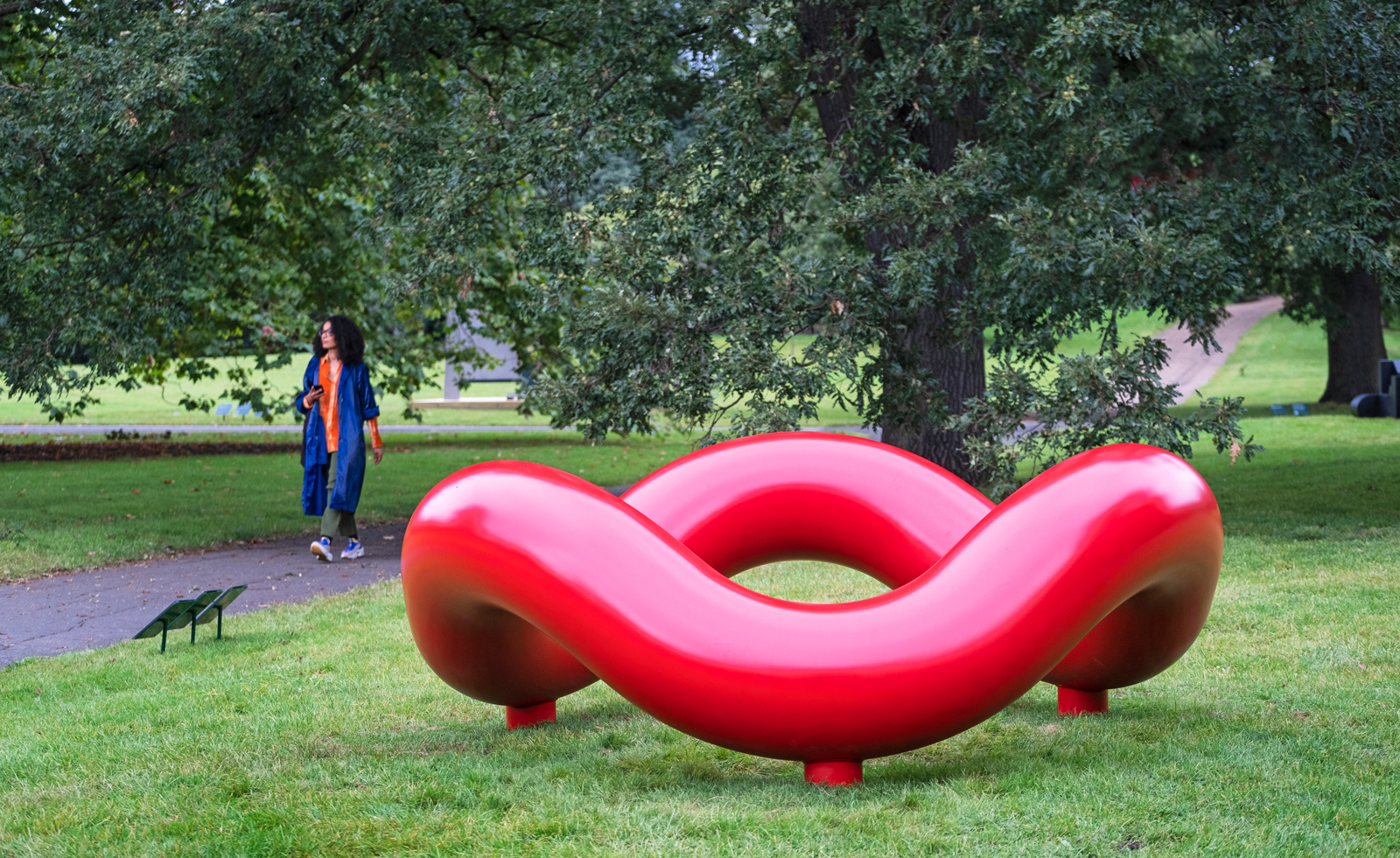
Play Sculpture, by Isamu Noguchi, represented by White Cube, at Frieze Sculpture 2021
Amah-Rose Abrams is a British writer, editor and broadcaster covering arts and culture based in London. In her decade plus career she has covered and broken arts stories all over the world and has interviewed artists including Marina Abramovic, Nan Goldin, Ai Weiwei, Lubaina Himid and Herzog & de Meuron. She has also worked in content strategy and production.
-
 Sculptor Woody De Othello paints a Miami museum red for a show that ‘almost hugs you’
Sculptor Woody De Othello paints a Miami museum red for a show that ‘almost hugs you’The Miami-born, California-based artist opens his first museum exhibition in his hometown as an experiential journey through life and lifeless objects
-
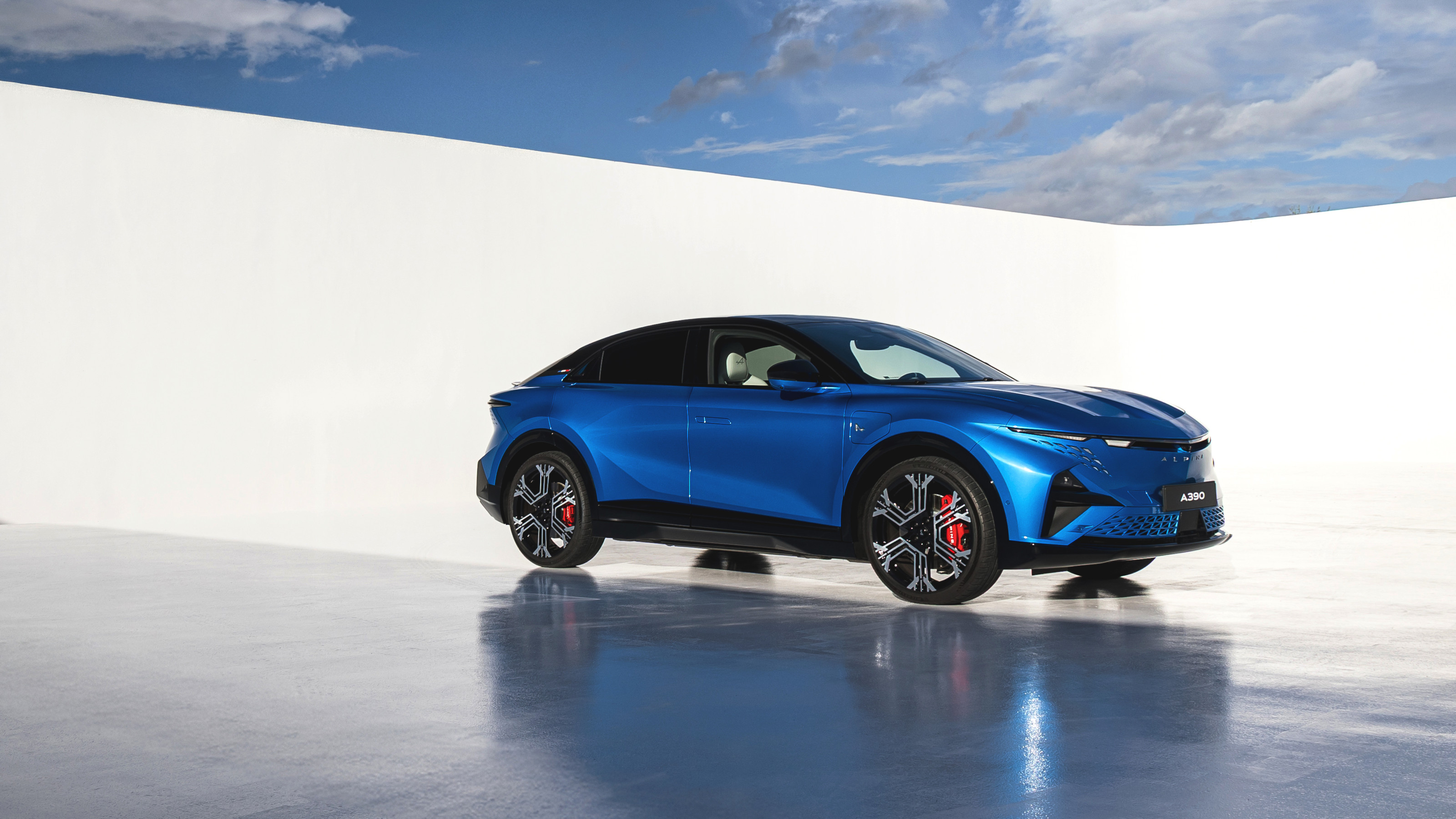 Alpine A390 GT: French, fast and fun. A sporting EV with a real sense of occasion
Alpine A390 GT: French, fast and fun. A sporting EV with a real sense of occasionAlpine doubles down on its fast electric credentials with the A390 GT, the French performance brand’s largest car to date
-
 Forget smart homes, Doma's 'intelligent' doors open at the sight of a familiar face
Forget smart homes, Doma's 'intelligent' doors open at the sight of a familiar faceYves Béhar and Jason Johnson have founded Doma, a tech start-up dedicated to seamlessly integrating tech into your daily life
-
 Out of office: The Wallpaper* editors’ picks of the week
Out of office: The Wallpaper* editors’ picks of the weekFar from slowing down for the festive season, the Wallpaper* team is in full swing, hopping from events to openings this week. Sometimes work can feel like play – and we also had time for some festive cocktails and cinematic releases
-
 The Barbican is undergoing a huge revamp. Here’s what we know
The Barbican is undergoing a huge revamp. Here’s what we knowThe Barbican Centre is set to close in June 2028 for a year as part of a huge restoration plan to future-proof the brutalist Grade II-listed site
-
 Out of office: The Wallpaper* editors’ picks of the week
Out of office: The Wallpaper* editors’ picks of the weekIt’s wet, windy and wintry and, this week, the Wallpaper* team craved moments of escape. We found it in memories of the Mediterranean, flavours of Mexico, and immersions in the worlds of music and art
-
 Each mundane object tells a story at Pace’s tribute to the everyday
Each mundane object tells a story at Pace’s tribute to the everydayIn a group exhibition, ‘Monument to the Unimportant’, artists give the seemingly insignificant – from discarded clothes to weeds in cracks – a longer look
-
 Out of office: The Wallpaper* editors’ picks of the week
Out of office: The Wallpaper* editors’ picks of the weekThis week, the Wallpaper* team had its finger on the pulse of architecture, interiors and fashion – while also scooping the latest on the Radiohead reunion and London’s buzziest pizza
-
 Out of office: The Wallpaper* editors’ picks of the week
Out of office: The Wallpaper* editors’ picks of the weekIt’s been a week of escapism: daydreams of Ghana sparked by lively local projects, glimpses of Tokyo on nostalgic film rolls, and a charming foray into the heart of Christmas as the festive season kicks off in earnest
-
 Wes Anderson at the Design Museum celebrates an obsessive attention to detail
Wes Anderson at the Design Museum celebrates an obsessive attention to detail‘Wes Anderson: The Archives’ pays tribute to the American film director’s career – expect props and puppets aplenty in this comprehensive London retrospective
-
 Meet Eva Helene Pade, the emerging artist redefining figurative painting
Meet Eva Helene Pade, the emerging artist redefining figurative paintingPade’s dreamlike figures in a crowd are currently on show at Thaddaeus Ropac London; she tells us about her need ‘to capture movements especially’